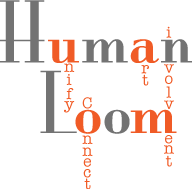
Written April 23, 2003, updated on July 02, 2010
A Teaching Philosophy By Heath Winer
Art Education is the use of art to communicate and share, not
just to teach art. To use art to enhance every subject with an open-minded exploration and approach to different
environments, cultures, lifestyles, and traditions, both new and old.
The Main Objective is to offer an opportunity for people of any age and background to understand the world and all that it contains. This includes fostering new ways of thinking, experimenting, understanding, and playing with and without
the structure of a formal classroom environment. This environment must be agile enough to allow for different
learning styles and personalities.
First and foremost, we also must never underestimate the power of “FUN.” People are more receptive when tasks are enjoyable.
Influences:
Life is a process. Learning is not a beginning and ending thing, but a continually develops throughout life.
~ Rabbi Michael Lerner
Reggio Emilia Schools, Northern Italy
- Visual Language is the first language of children.
(no formal language taught until 6 years old) - Pedagogy of relationships comes first. One teacher, one group of children, for the whole time the students is at the school. (3 years)
- Posted in every room, Documentation of learning is in the form of children’s work, writing, and photos.
- Inside is integrated with the outside.
- Many various supplies are provided for students use for any project. Clay, mirrors, Overhead projectors (to play with shadows), lights, paper, pens/pencils, musical instruments, plants, etc.
- Children work in small groups.
- Teacher’s role is to provoke. Teachers must have a good sense of their students to be able to ask the right questions. Deep study of a few things. For example:
- “What does a sound look like?”
- “How can you show what taste looks like?”
- Students are each given a mailbox so that they may write notes to each other. They use their own languages of Pictures and codes that they understand perfectly.
- Observational drawing
- Teachers meet everyday to chat, talk, meet with each other.
Museum of Children’s Art, Oakland, CA
“The point is to develop the childlike inclination for play and the childlike desire for recognition and to guide the child over to important fields for society. Such a school demands from the teacher that he be a kind of artist in his province.”
Visible Learning: Letting children explore, see what they are interested in and using that as the vehicle to teach them.
Project Zero
Harvard Univiersity
Ways to Aide Memory and Retention (5 Implications)
- Use Emotion: Create an emotional appeal.
- >Explore different / Multiple senses
- >Empower student by allowing them to self direct and create their learning environment
- Learning is a social venture: encourage collaboration on projects and problem solving, so the students may learn from one another.
- Pattern finding: creating lessons that assist students in finding patterns in their work and across subjects into real life situations.”
“Linking Brain Research to Art,”
Art Education, November 1999.
Service Learning.
Embedding into curriculum a process to create a deep understanding of other people, their lives, and their cultures:
- Focus on Self (Internal self exploration)
<Self Knowing> - Curiosity about others (External curiosity about others)
<Starting of Other-Knowing> - Company of others, others as neighbors
(Recognizing others as part of your community)
<Other-Knowing> - Compassion for others <Difference Holding>
- Fellowships with Others, seeing others as Self
<Difference Transcending>
Yongming Tang & Charles Joiner, Synergetic Inquiry
| Community Art |
Graphic Design |
Art Education |
About the Artist |
For more information e-mail: info@humanloom.com |
|||